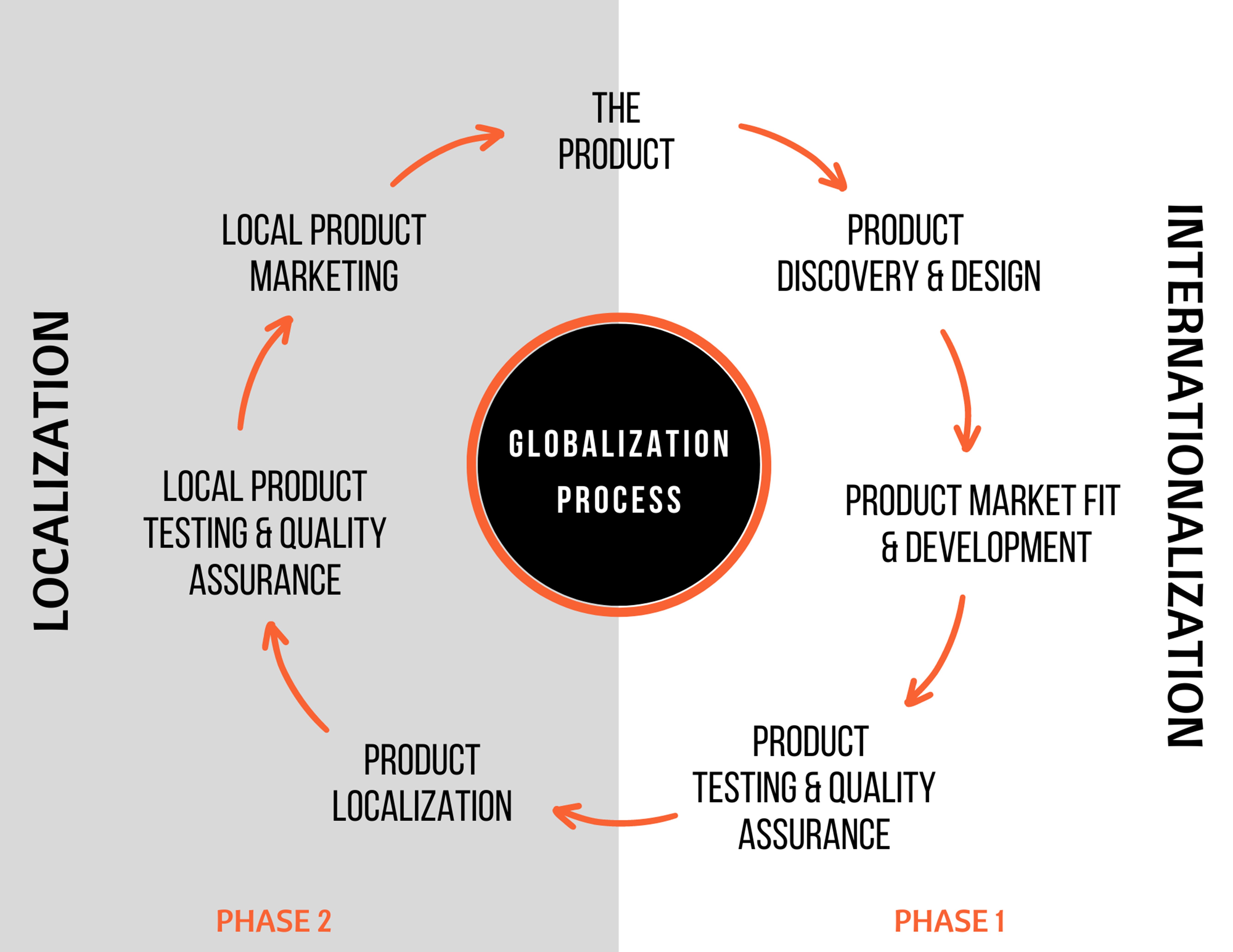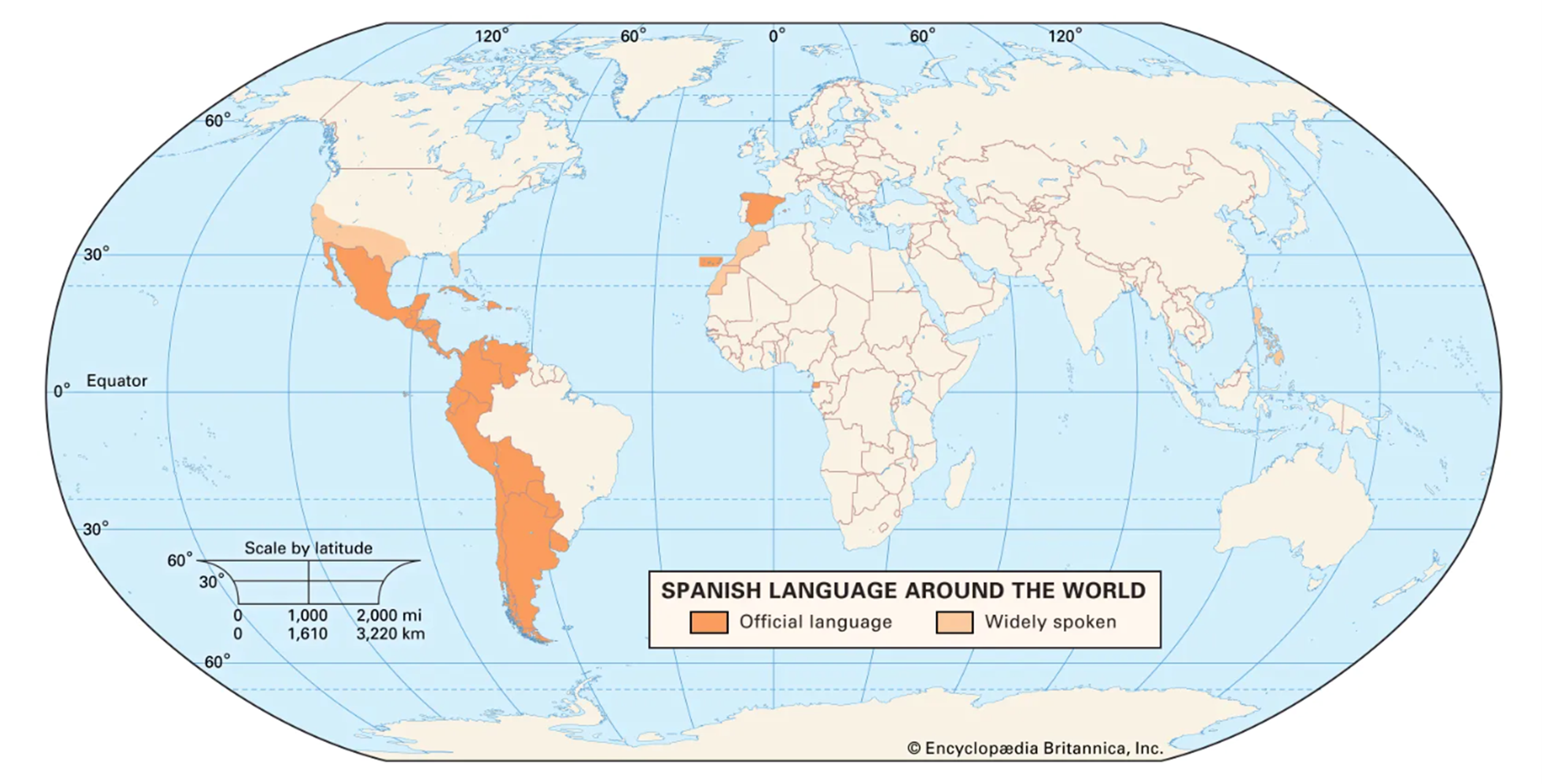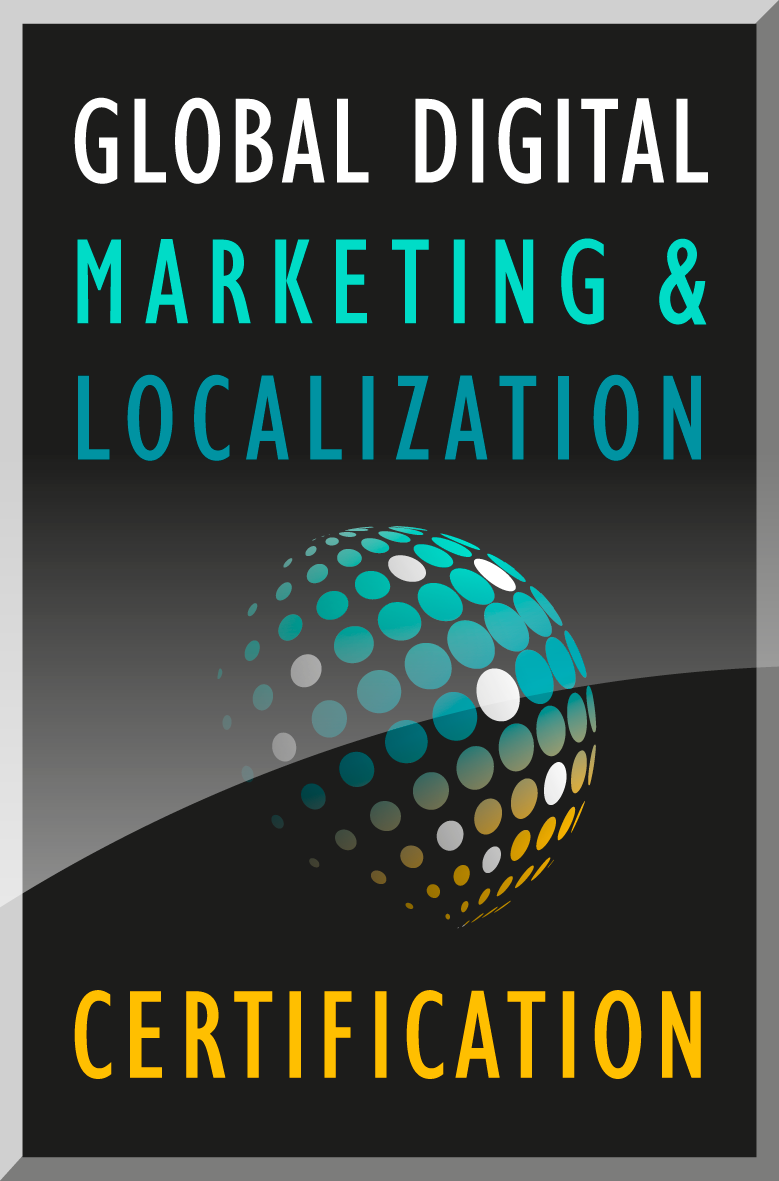Localization versus Regionalization: How to Choose the Right Locale

Regionalization, Localization, Internationalization and Globalization are concepts that people use interchangeably and have similar meaning, to an extent. Understanding their differences is key for every person working for any organization that plans to expand internationally. After understanding these terms and what is applicable to each one of them, the realization of what it takes to incorporate all the components and the discovery of what the respective product needs in order to be successful in other markets arises. Let’s start with a short and sweet definition for each of those terms:
- Regionalization is the identification of the needs specific to a region or a country.
- Localization is the process of adapting a product or service into a specific target market so that it is easy to understand in the local context.
- Internationalization is the practice of designing and developing products, services and internal operations to facilitate expansion into international markets.
- Globalization is the processes by which a company brings its business to the rest of the world. This is a horizontal process that requires the entire organization to align and work as a unit.
This commentary analyses the difference between Regionalization and Localization in the context of distinguishing how to choose a locale for a language that has variations, such as Spanish. But to do so, we have to understand the process as a whole.
What is the Globalization process that organizations should apply in order to be successful?
The following graph represents the Globalization process, which incorporates two phases: Localization and Internationalization, and by doing so, the product will look native in different locales and the goal of reaching the desired markets is achieved.

—- Graphic created by author Yessica Imm, based on findings from Localization Industry Standards Association and her work experience. —-
According to Localization Industry Standards Association (LISA), globalization comprises internationalization and localization processes illustrated in the graph above. In short, this graph displays that globalization is more of a cycle, rather than a single process, which consists of planning and identifying how a product can reach other markets effectively. According to Anna Schlegel in her book “Truly Global”, Globalization is a huge puzzle that can help an enterprise succeed globally with intent. It is extremely important for an organization to think global in the early stages. When this doesn’t happen, a lot of internationalization issues arise, delays happen, more budget is used to fix errors, and consequently, the results are either a poor user experience or simply a delay on achieving international markets effectively.
So what is the difference between Regionalization and Localization?
These two concepts relate at being business strategies that maintain focus on a particular region, and based on that region, the strategy is aligned according to each particular market, their preferences, culture, regulations and specific structures.
Regionalization is the segmentation and identification of needs based on a specific region or location. It becomes necessary when a product or service needs to satisfy the market requirements and needs in a specific location. This includes the adaptation to the laws and regulations of such region or country. This concept requires deep knowledge into these rules and cultures, therefore, it requires the help from local subject matter experts. The decision of regionalizing a product should be born during the product definition, requirement and development stage.
Localization, as I mentioned before, is the process of adapting a product or service to a particular market so that it is easy to understand and comfortable to use in the local context. Some examples are currency, language, date and time formatting. This process involves the translation of user interfaces like mobile and web applications, marketing websites, knowledge-based articles, courses and certifications, and more. If internationalization is done well from the beginning, localization is a straightforward process. However, this is a very rare scenario for most companies worldwide.
After reading these two definitions, you might think they’re both the same, or very similar. But in this context, I am analyzing the differences for each of these concepts and how they relate when choosing a locale based on a language that has variations.
What is a Locale in computer software?
A locale is an identifier for a specific language and region. It is a set of parameters that defines the user’s language, region, and any special variant preferences that the user wants to see in their interface. These consist of a language code and a country/region code.
The variations of Spanish around the world
Spanish is the official language for 20 countries: Argentina, Bolivia, Chile, Colombia, Costa Rica, Cuba, Dominican Republic, Ecuador, El Salvador, Equitorial Guinea, Guatemala, Honduras, Mexico, Nicaragua, Panama, Paraguay, Peru, Spain, Uruguay and Venezuela. Each of those languages is governed by different regulatory bodies, such as the Real Academia Española in Spain and the Academia Mexicana de la Lengua in Mexico. The following map shows Spanish around the world, as the official language and as widely spoken.

Spanish is spoken as a first language by around 360 million people in the world. According to the Encyclopedia Britannica, in the early 21st century, Mexico had the greatest number of speakers (more than 85 million), followed by Colombia (more than 40 million), Argentina (more than 35 million), the United States (more than 31 million), and Spain (more than 30 million). You would think that you can reach all the Spanish speaking markets with the same Spanish translations, however, depending on what industry you’re in and what product or service you’re providing, you need to be more specific and target each locale directly. For the sake of this commentary, I’m analyzing the differences between the variations for Spanish.
What is “Universal” or “Neutral Spanish?
Before getting specific, let’s start with what the translation industry considers as ‘’Universal” or “neutral” Spanish. This refers to a version of the Spanish language that doesn’t include any regionalisms, localisms, or colloquial expressions. In practice, it is very difficult to create a universal version of such a massive language, spoken in many different countries. It is really more like a dream for companies that try to reach a wider market without having the need to satisfy every locale peculiarities. Something important to keep in mind, the more personality you want to add to your content, the less likely you can apply universal Spanish, especially with marketing, sales, or more direct and interpersonal content.
What is LATAM Spanish?
There are 33 countries in Latin America and the Caribbean today. Spanish is the official language for 18 out of these 33 countries. Since the territory is so large and there is no “general” Spanish, translators developed what is referred to as “LATAM Spanish”, with the locale code es-419. This “Generic LATAM Spanish” avoids country colloquialisms but still sounds familiar with the general audience. LATAM Spanish is considered to be more inclusive than Mexican Spanish.
What is Mexican Spanish?
Although Mexico is considered part of Latin America, the region has a variant all of its own. They have vocabulary, idioms, and dialects that are unique and specific to the country. In many cases, Mexican Spanish is the selected variant because of its large demographic and reach.
What about U.S. Spanish?
The United States has the second largest population of Spanish speakers. According to Forbes, the way data is trending, by 2050, one in three people in the U.S. will speak Spanish. Due to this influence and growth, the U.S. has developed a Spanish variant of its own. This variant has influences of Puerto-Rican, Dominican, and other Latin American countries. The most distinct characteristic of this variant is that it reserves many of its the English formatting conventions such as date, decimals, time, and even capitalization.
What is European or Iberian Spanish?
The Spanish spoken in Spain is called Castilian, a term that refers to the province of Castile located in central Spain. It is said that the Spanish language originated there.
Avoiding confusion within Spanish itself
You need to keep in mind that even though Spanish is the official language for a region, there are other languages spoken within the same country. For example, in Spain there are 5 official languages: Castilian Spanish (which is what you may think of as “Spanish”), Catalan, Galician, Basque, and Aranese. You would probably be able to reach the market by only translating into Castilian Spanish, but there may be some situations where you might want to translate into these other languages as well.
In conclusion, which Spanish variants should you translate into?
With all these variants of Spanish available to choose from, you might be wondering which variant will serve your product the best. If you want to sell to Colombia, do you need to translate into es-CO? And can you use the same locale if you wanted to sell in Mexico? What about in Spain? The answer to this varies. It all depends on the type of industry, as well as the budget your organization has. Spanish is such a massive language, with varieties in vocabulary, tone, conventions, dialects, and more. To be more effective, and if the budget allows it, it is recommended to target each market locally. In many cases, it’s possible to combine translations so that the same content can serve different markets. But you need to do this strategically. This is why many companies that are starting to expand to Spanish speaking countries start with Spanish for Latam (es-419), which provides a form of written Spanish that can be used across Central and South America. But if you’re expanding to multiple countries, and the budget allows it, you should try to be more personal and direct by using their own respective country locales.
In short, when picking the right locale for your product, you have to know your audience in your particular industry. Research is the key for the answer to this question. To truly resonate with your desired market, is best to localize as closely as possible to the audience. This means that when you take the extra step of understanding and learning the cultures, dialects and norms of your target market, you will create content that will truly relate to your audience. Once this is done, your audience will feel closer to your message and the product will have higher chances to succeed.
Yessica’s comments on the Global Digital Marketing and Localization Certification
I recommend this course for anyone who is interested in learning more about the proper ways to go to international markets. It is self-paced and there are many interviews of many people in different industries who give their perspective and share their knowledge. Very insightful!
References:
Encyclopædia Britannica, inc. (n.d.). Spanish language. Encyclopædia Britannica. Retrieved December 7, 2022, from https://www.britannica.com/topic/Spanish-language
How many Spanish languages are there? The true answer. Rubric. (n.d.). Retrieved December 7, 2022, from https://rubric.com/en-US/how-many-spanish-languages/
Héctor. (n.d.). Virginia Bertolotti, Nuevo Miembro de la AML. Academia Mexicana de la Lengua. Retrieved December 7, 2022, from https://www.academia.org.mx/
ICU locale “Latin American Spanish” (es_419). (n.d.). Retrieved December 6, 2022, from https://www.localeplanet.com/icu/es-419/index.html
Real Academia Española. (n.d.). Retrieved December 7, 2022, from https://www.rae.es/
Schlegel, A. N. (2016). Truly global: The theory and practice of Bringing Your Company to International Markets. FriesenPress.
Thompson, S. (2022, November 9). The U.S. has the second-largest population of Spanish speakers-how to equip your brand to serve them. Forbes. Retrieved December 7, 2022, from https://www.forbes.com/sites/soniathompson/2021/05/27/the-us-has-the-second-largest-population-of-spanish-speakers-how-to-equip-your-brand-to-serve-them/?sh=6219c4a2793a
What is globalization? LISA: What Is Globalization? (n.d.). Retrieved December 6, 2022, from https://web.archive.org/web/20110101205931/http:/www.lisa.org/What-Is-Globalization.48.0.html
Disclaimer: Copyright © 2021 The Localization Institute. All rights reserved. This document and translations of it may be copied and furnished to others, and derivative works that comment on or otherwise explain it or assist in its implementation may be prepared, copied, published, and distributed, in whole or in part, without restriction of any kind, provided that the above copyright notice and this section are included on all such copies and derivative works. However, this document itself may not be modified in any way, including by removing the copyright notice or references to The Localization Institute, without the permission of the copyright owners. This document and the information contained herein is provided on an “AS IS” basis and THE LOCALIZATION INSTITUTE DISCLAIMS ALL WARRANTIES, EXPRESS OR IMPLIED, INCLUDING BUT NOT LIMITED TO ANY WARRANTY THAT THE USE OF THE INFORMATION HEREIN WILL NOT INFRINGE ANY OWNERSHIP RIGHTS OR ANY IMPLIED WARRANTIES OF MERCHANTABILITY OR FITNESS FOR A PARTICULAR PURPOSE.


